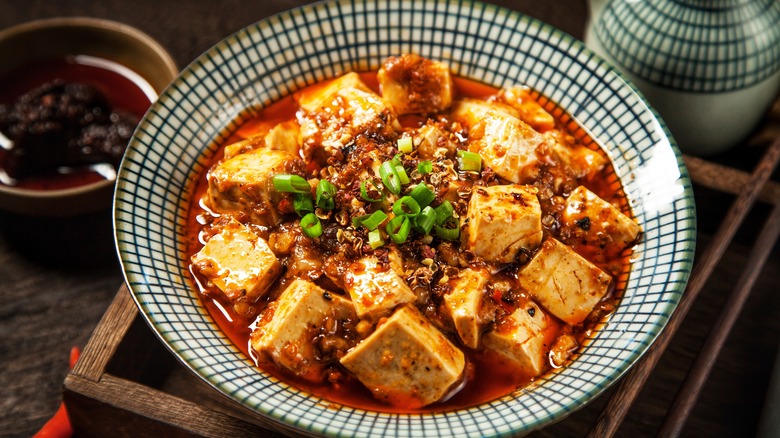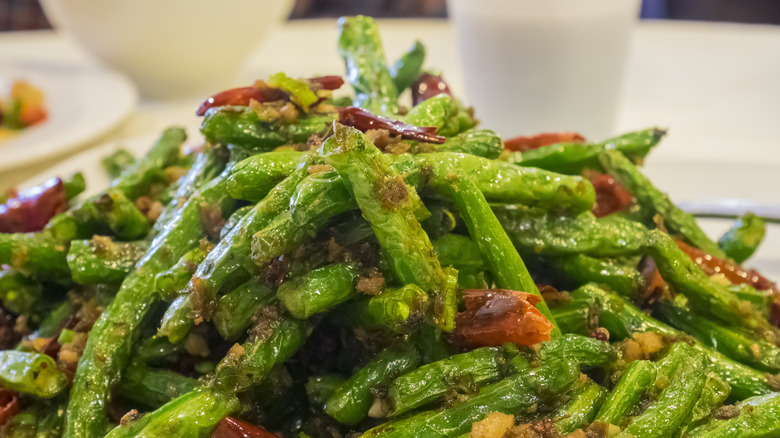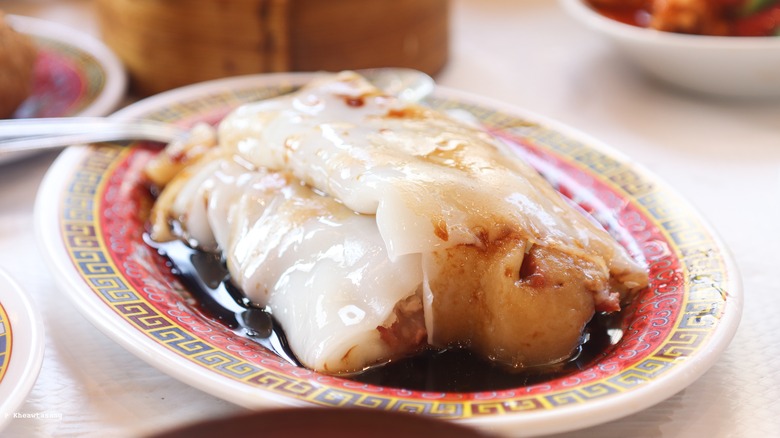Sichuan Vs Cantonese Cuisine: What's The Difference?
China is a massive country, with numerous ethnic groups, over 20 provinces, and land that ranges from mountainous to coastal to desert. As such, varying cuisines are inevitable. There are historically eight great regional cuisines of China, and each is a reflection of the place it comes from and the people who make it. Factors like weather, accessibility to ingredients, and culture affect the defining factors of these cuisines, but each is equally rich in history.
Two of the more well-known Chinese cuisines are Sichuanese and Cantonese. Sichuan is a province located in the southwest part of China, and its mild climate and fertile soil make agriculture a significant part of Sichuan's economy. Sichuan food has a reputation for being spicy. Guangdong is mainland China's most southeastern province and home to Cantonese people and culture. People from Canton were the first Chinese immigrants to come to America, and so Cantonese food is the foundation upon which much American Chinese food is now built. The two cuisines are, in fact, very different (but equally mouthwatering) and represent China's culinary diversity.
Sichuan cuisine is more than just spicy
For many, Sichuan cuisine is synonymous with the word "spicy." This is, in fact, its trademark feature, and the key is mala. In this word, the characters for "numbing" and "spicy" come together to describe Sichuan cuisine's spice. The combination of numbing Sichuan peppercorns (which are actually dried berries from the ash bush) and spicy chilis creates the unique mala flavor. Sichuan cuisine leans more into chilies than other Chinese cuisines because of its humid climate. According to Chinese medicine practices, excessive dampness has negative effects on the body's health and balance, but eating food with warming effects, like chilies, can eliminate that moisture.
Sichuan cuisine is more than just spicy, however. Each dish contains a balance of seven flavors: spicy, salty, sweet, bitter, acid, pungent, and nutty. Some common seasonings besides peppercorn and chili include cinnamon, black cardamom, garlic, ginger, and star anise. The popular Sichuan dish Kung Pao chicken, for example, combines chicken, golden peanuts, and dried chilies in a sweet-and-sour sauce, thus checking off all seven flavor boxes. Even seemingly simple dishes pack unexpected flavors. Dry-fried string beans could be overlooked as a simple string bean and chili dish, but it's much more complex. The beans are fried until their skin shrivels and sears, after which they're tossed in an oily sauce of aromatic garlic, ginger, mustard stems, mala peppercorns, and chilis. A little bit of ground pork in the sauce makes the beans extra savory.
Cantonese cuisine is refreshing and light
Located on China's southeast coast, Guangdong has always been a major player in the country's trading industry, and as such, a plethora of imported ingredients allowed Cantonese cuisine to become more cosmopolitan than those from other regions. Unlike Sichuan food, which incorporates impactful and diverse flavors, Cantonese food focuses on simplicity. These dishes highlight the freshness and natural flavors of whatever meats, vegetables, or fish comprise the dish.
Cantonese food, although not completely devoid of chilies, isn't known for being spicy. Mild sauces like oyster sauce, hoisin, and plum sauce are commonly used to enhance the main ingredients' natural flavors and never overpower their freshness. Many Cantonese foods are steamed, like ginger soy steamed fish, which keeps the meals feeling light. Other common preparations include stir-frying and boiling.
A notable part of Cantonese cuisine is dim sum. This was originally a tradition of tearooms, which were frequented by travelers and traders in need of food. This meal is still consumed today in Guangdong for either breakfast or lunch, and it's gained international fame. The phrase "dim sum" comes from the Cantonese word for appetizer; a typical dim sum array features steamed or fried small bites like dumplings, shumai, meat buns, or rice noodle rolls. Dim sum is the perfect light meal and a great way to sample what Cantonese cuisine has to offer.


